Is it worth insulating your garage? It depends. Get the scoop in this comprehensive guide.
Garages are a great asset to have, but let’s face it: If you have one attached to your home, it’s likely that it’s radiating heat into your house in the summer—and making attached rooms feel really cold in the winter.
If that’s happening to you, guess what? You’ve got an insulation problem. (But you probably already knew that, right?)
Not to worry. Depending on where you live, you could fix your insulation issues for $0 upfront—eligible rebates included. Tap here to see if you qualify.
In this homeowner guide, we’ll be taking a deep dive into the importance of garage insulation, the pros and cons of insulating garages, and why and how it works to make your house more comfortable and reduce energy waste in your home.
Feel free to use this quick index to jump ahead:
- How to know if you need to insulate your garage
- How to tell if your garage has been insulated previously
- 9 signs you should upgrade your garage insulation
- The underlying reason why you should insulate your garage
- Why insulating a garage is worth it (if it’s attached to your house)
- The pros and cons of insulating garages
- Go-to garage insulation options
- Where to insulate in your garage
- Garage insulation costs
- How to get garage insulation, with no—or very little—upfront cost
- Garage insulation FAQs
But first things first: This guide primarily covers existing homes and garages. (So if you’re adding a garage to your home for the first time, you’ll still get something out of this article, but we wanted to give you a heads up.)
How do you know if you need to insulate your garage?
It can be tricky to know if you need to insulate—or reinsulate—your garage. But depending on your garage type and specific wants, you may not even need to. We’ll explain.
We’re insulation experts, and we’d be the first to tell you that the most important areas to insulate to make your home feel better are the foundation and attic.
But garage insulation is important, too, especially if the garage is attached to your house.
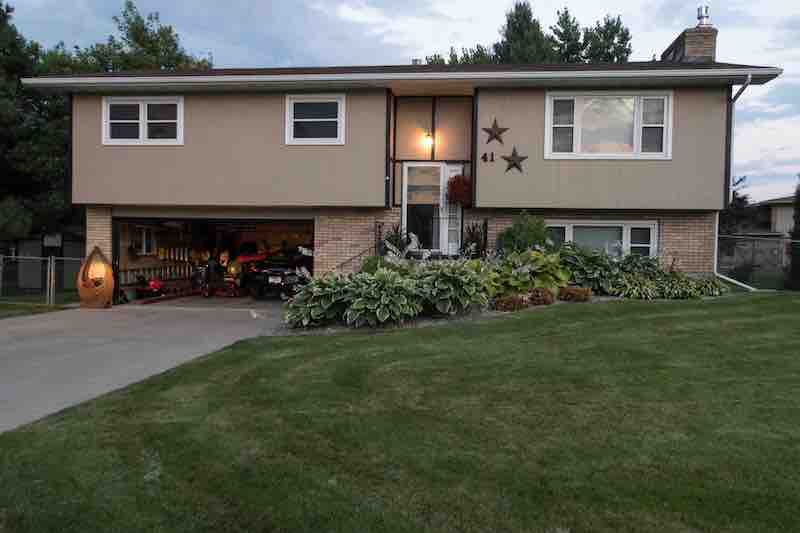
When we talk about insulation with our customers, they often ask us, Was my garage insulated when it was built? And my house, too?
It depends. Many homes actually have hidden attics and spaces that have remained uninsulated the entire life of the house. This is just one reason why houses can feel uncomfortable—they’re drafty in winter and stuffy in summer.
Many homes actually have hidden attics and spaces—like garages—that have remained uninsulated the entire life of the house.
And some attached garages were built years ago under older building codes with very little insulation materials—or no insulation at all. This can make your house super uncomfortable. (Ask our writers how they know.)
Even if your home was insulated when it was built, insulation degrades over time. It’s just a fact.
So that means if your home was built in 2000, you’re likely already in need of an insulation upgrade.
Plus, our climate is changing, and keeping the air you pay to heat and cool your home inside is more important than ever.
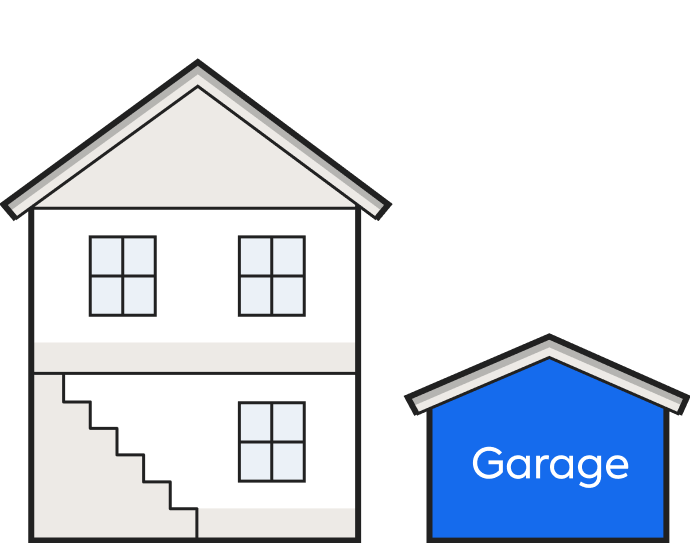
But with all that being said, you don’t necessarily need to insulate your garage if it is detached and:
- You don’t pay to heat or cool it (maybe you simply use it for storage space and to park your car), and/or
- No living spaces are over the garage—and you don’t plan to create an above-the-garage apartment in the future.
Do builders insulate garage walls?
Normally, when a builder is completing construction on a new house, they will at least insulate garage walls and ceilings that are attached to the interior living spaces of the home (think above-the-garage bedrooms and living rooms that border the garage wall).
But if your home was built before 2000, you may have a completely uninsulated garage. Building codes and energy efficiency standards have come a long way in the last 10 to 20 years.
It can be hard to know if your builder-installed garage insulation is creating an effective thermal boundary—even if your house was built after 2000.
The best thing to do is to cut open your garage wall or ceiling to see what’s inside.
How to tell if your garage has been insulated
To check if you have any garage insulation, remove outlet covers and use a flashlight to get a peek into the interior of the walls. This simple method is your best bet to get a good look.
If the outlet cover trick doesn’t work, get out your power tools and drill a hole halfway up the wall to get a better visual. (Please keep safety in mind. And we suggest drilling on the garage wall side that borders outside so you don’t have to patch up your attached interior walls.)
If your garage has been insulated in the past, you might see rigid foam board insulation (which looks like sheets of Styrofoam that are cut to fit your walls) or the standard fiberglass batt insulation inside the wall.
With that all said, there are a few signs and symptoms that indicate you might need to add more garage insulation—even if you can tell your garage has been insulated at some point in the life of your house.
9 Signs you should upgrade your garage insulation
Are you asking yourself Should I insulate my garage? If you’ve got the following symptoms, it’s likely time for a garage insulation upgrade:
- The rooms that share a wall with your garage are really hot in summer and really chilly in winter
- The room above the garage is uncomfortable year round
- Your floors near the garage are cold in the wintertime
- Wall studs in the garage are exposed and uninsulated
- The original garage wall insulation is flaking or crumbling
- You can hear every bit of noise made in the garage inside the house
- Your house hasn’t had an insulation or air sealing upgrade in 10 or more years
- In summer, you feel heat coming in from the door that leads from your garage to your house
- You can feel drafts—hot or cold—through outlets and light switches along the interior wall that borders your garage
Why should you insulate your garage?
If you’re on the fence about investing in an upgrade, consider that—especially when paired with air sealing and attic insulation—garage insulation can:
- Cut energy waste in your home, especially in summer and winter
- Help protect the structural integrity of your house
- Reduce moisture intake into your home
- Increase the health of your home indoor air quality
- Create a more comfortable home throughout the year
- Decrease the chances of ice dams damaging your roof
- Increase the efficiency of your HVAC system (and keep it from getting overworked and worn out)
Not to mention, insulation upgrades are one of the energy-efficient home improvements that have a really great return on investment (ROI) if you go to sell your home. And there are insulation tax credits and rebates that can reduce your out-of-pocket costs.
Discover 8 energy-efficient home improvements that can increase home value.
According to reports by Pearl Certification, insulation upgrades can yield a 83% return on your home improvement investment.
Insulation upgrades can yield a 83% return on your home improvement investment.
Pearl Certification
Is insulating a garage worth it? Yes. Here’s why it works.
In summer, if heat is radiating into your home from your attached garage—or if cold winter temps are making that room above the garage unbearable—insulating your garage is going to be a major life upgrade.
It can also help you cut down on wasted money in your energy bills.
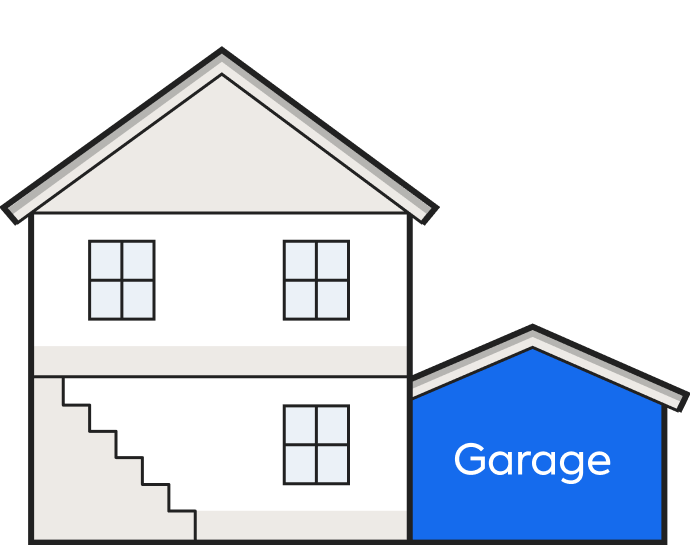
Here’s how insulating your attached garage keeps your home more comfortable:
In the summer, your garage can feel like a giant oven because most garages don’t have air conditioning. And in the winter—especially if you live in a region with extreme temperatures—your garage can feel like an extension of your refrigerator.
The outside temperatures that get trapped in your attached garage can move into your home if it’s not “locked out” by a thermal boundary, or the dividing line between your home’s internal temperature and the outdoors.
Effective thermal boundaries are created by sufficient (and correctly installed) insulation.
And when insulation is paired with air sealing, all the open seams and air gaps between your attached garage, foundation, and attic that can allow outside air and moisture inside your house (aka air leaks) are closed up.
What does this do? It traps outside air in your garage space—where it belongs.
In the summer, garage insulation and air sealing keeps heat from radiating into your house and making it really uncomfortable. Bonus: It also helps your AC from being overworked.
In the winter, these same home upgrades serve to keep cold air outside of your house.
That way, the rooms alongside your attached garage—and the floors and doors, too—are less drafty and chilly. (Goodbye, space heaters!) This also keeps your heating system from working too hard in the winter.
You could cut up to 45% of your energy waste in your existing home with the right air sealing and insulation upgrades.
2022 Insulation Industry Opportunity Study
So let’s take this one step further.
Let’s say you discover your garage ceiling and walls are poorly insulated, and it’s one of the root causes of your house feeling so uncomfortable and wasting so much energy.
And let’s say you decide to upgrade its insulation (along with air sealing, too!) to repair your house’s thermal boundary.
The next summer, on the hottest day of the year, you step out into your garage and it’s absolutely sweltering—hotter than ever before.
But your living room, which sits just on the other side of your garage wall, and the bedroom over the garage are both cool as a cucumber and feel so much better than they did before you insulated your garage.
Does this mean your insulation upgrade didn’t work because your garage is still really hot?
Nope. This actually means your garage insulation upgrade is doing exactly what it was designed to do—keep the hot air outside of your home.
Before we move into the pros and cons of insulating garages, we’ve got something we need to add:
If you haven’t upgraded your attic insulation in some time, it’s highly likely (in fact, we’d figuratively bet on it) that your attic insulation—or lack thereof—is also contributing to your house feeling so uncomfortable and wasting energy.
So it’s not just your attached garage and garage ceiling that’s radiating uncomfortable temps into your house, your attic is playing a part, too.
And you know what? We can fix that permanently. If your house qualifies, you can get important insulation upgrades—like your garage ceiling and walls, attic, and crawl space—with Sealed’s energy-savings guarantee and flexible, transparent payment options..
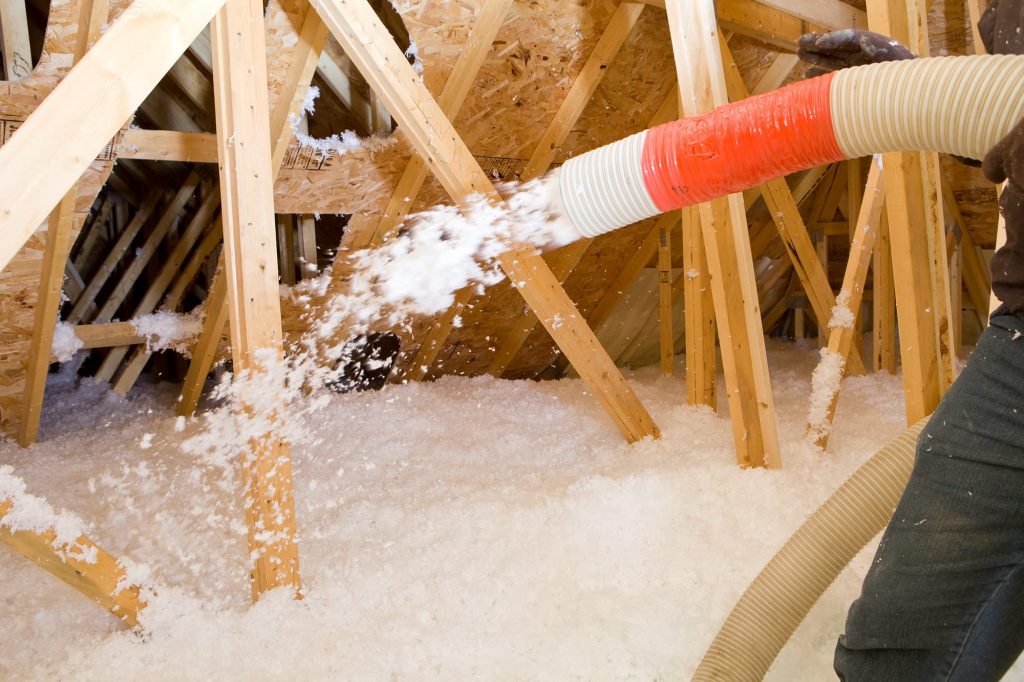
Pros and cons of insulating your garage
Let’s dig into the pros and cons of garage insulation upgrades.
But first: We’ve worked with thousands of homes and have found that three core home improvements—heat pump HVAC systems, insulation, and air sealing—can cut your energy waste up to 50%.
Full disclosure: home energy efficiency is our thing, so we might be a little biased, but we know that insulation is one of the best home upgrades out there.
So of course we believe there are plenty of advantages to insulating your garage, especially if it’s attached to other living spaces that you pay to heat and cool.
But we’ll list the cons, too!
Pros of insulating your garage
- Insulating key areas of your attached garage reduces energy used to heat and cool your home.
- You’ll hear less garage noise inside your house.
- Garage insulation could increase your home value.
- Insulating your garage can finally fix the comfort issues in attached rooms or an over-the-garage apartment.
- You’ll have greater humidity control in your home.
- Added insulation gives your HVAC system a longer life.
Your whole home will be way more comfortable year round, especially if you pair upgraded garage insulation with upgraded attic insulation.
Cons of insulating your garage
- If you have a detached garage, insulating it won’t have a significant effect on your home’s comfort or utility bills—unless you’re paying to heat or cool it.
- It can be expensive to insulate your garage, depending on its square foot—how much insulation you need (and where you need it).
- It’s a really big, messy project—especially if you have to punch holes in existing drywall.
- If you DIY garage insulation, there’s the risk of doing it incorrectly, causing long-term problems.
- If you hire someone, negotiating, managing, coordinating the work, and making sure it’s done right can be a big headache.
- Garage insulation can only go so far in fixing an uncomfortable house. You may need to also invest in attic insulation (or start with attic insulation) if that’s the primary problem.
Not for sure if garage insulation is the right fix? Talk to us at 917-382-3729. A phone call is free.
Garage insulation options
If you do decide to upgrade your garage insulation, you should know about these options:
- Fiberglass insulation: Fiberglass is a common type of insulation that is made from glass fibers. It’s usually the pink kind you see in home improvement stores. But it’s not the best for every situation, and it’s particularly susceptible to moisture.
- Rock wool: Rock wool is highly durable, extremely fire-resistant, and very resistant to moisture. It comes in large batts that can be installed between wall studs before drywalling.
- Spray foam insulation: Spray foam is primarily used in attics to insulate and air seal at the same time, but it can be effective in other areas too. It’s also one of the more expensive types of insulation. Spray foam insulation resists moisture well and is quite effective at keeping humidity out.
- Foam board: Foam board can have a higher R-value than fiberglass, but it’s still fairly cost-effective. It’s made of polyurethane or polystyrene foam and looks quite similar to the disposable cups of yesteryear.
- Cellulose insulation: Cellulose is a super effective insulator and works especially well for garage ceilings. It’s also incredibly eco-friendly. In fact, cellulose is made from recycled materials and has a negative carbon footprint.
Not sure which type of insulation is right for your garage?
You may need a combination of insulation types to permanently fix the issue. And we can help.
If you’re eligible (find out here), you can get a home scope from a Sealed expert. It’s completely free to get our professional opinion.
What R-value insulation should I use in my garage?
Generally, insulation with an R-value between R-13 and R-21 is recommended. Adding insulation to exterior walls (including garage walls attached to living spaces) can help increase R-value and create a more powerful thermal boundary for your home.
If you’re insulating your garage ceiling, you’ll need a higher R-value. Why? The joists are deeper, so there’s more space to insulate to create a sufficient thermal boundary. Your garage ceiling would likely be insulated in the R-30 or R-40 range if a professional took on the work.
Wondering what is R-value and why it matters?
R-value is the measurement used to show how much a material is resistant to heat flow. The higher the R-value of a material, the greater its ability to stop heat from entering your home in summer—or escaping your home in winter.
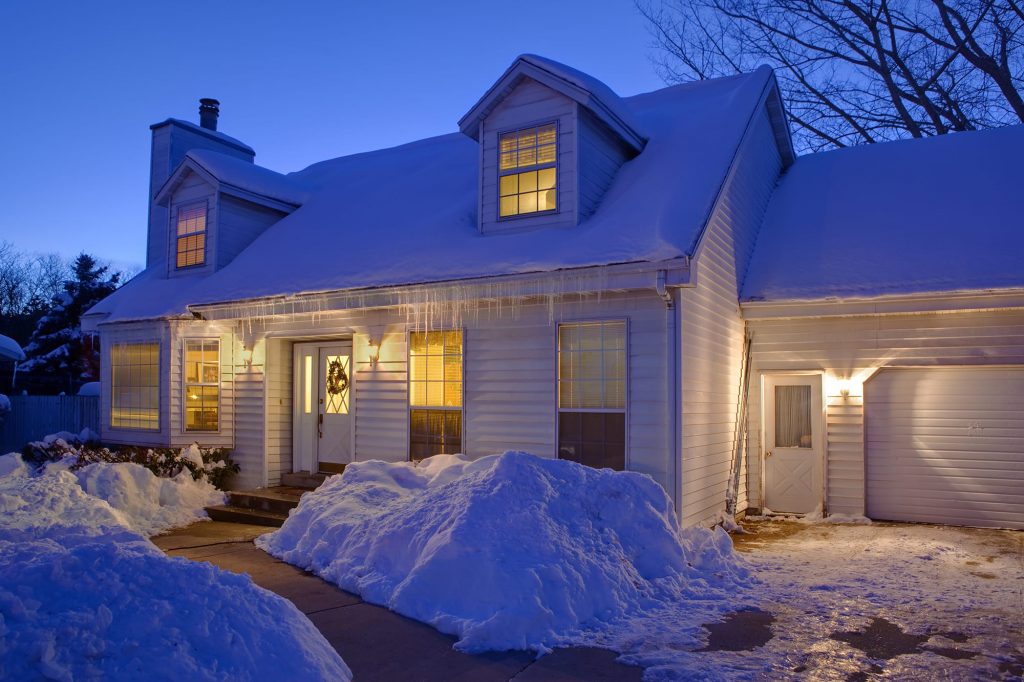
Garage insulation for winter
Wondering what insulation works for your garage in winter? The same exact insulation that’s working on behalf of your garage in summer.
But many homeowners swear by adding additional layers of winter garage insulation to garage doors. You can use a garage door insulation kit or reflective foam that you can install yourself.
However, while DIY garage door insulation kits for winter will make your garage feel slightly warmer, they’ll have a minimal to no impact on your energy costs.
Insulating the garage walls and ceilings that border interior rooms will have the most impact on your overall comfort and heating and cooling bills.
What kind of insulation is best for a garage?
If you’re wondering what insulation option for your garage is best, it really depends. Your best bet is to get an expert review to determine where you’re going to get the most bang for your buck when insulating.
We know that could sound like a cop-out answer, but each house and garage structure presents unique insulation challenges. There’s no one-size-fits-all solution.
Your garage insulation type and install approach will depend on factors like:
- The other areas of your house that are insulated and air sealed (or need additional insulation and air sealing)
- The year your house and garage were built
- If there’s still working insulation in place
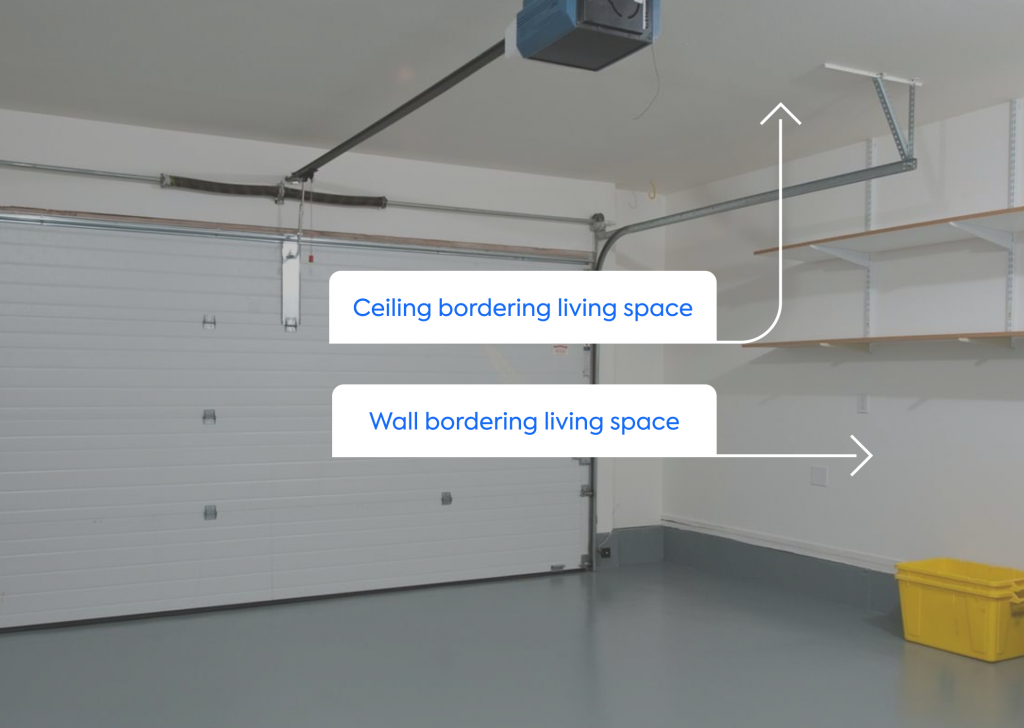
Where to insulate in a garage
Here’s where you should insulate in your garage:
- Your garage ceiling—if it’s attached to a room in the house or an attic that extends to other parts of your house
- Any garage walls attached to interior rooms in your house—other than the ceiling (this is where you get the most improvement in cutting energy waste.)
And here’s our honest, expert opinion: For attached garages that you don’t plan on paying to heat or cool, you only need to insulate the above areas.
If you do plan to heat or cool your garage, you may want to also consider insulating:
- Garage walls that aren’t attached to interior living spaces or attics
- Your garage door
- Your garage floor
Cost of a garage insulation project
Okay, you’ve made it this far, and you’re almost a garage insulation expert yourself—almost.
Let’s talk project costs.
Insulation projects can get expensive, especially if big upgrades are needed. But here’s the good news: They are one of the best home improvement projects you can take on.
Not only can added insulation cut your monthly spend on energy waste, but it also could increase your home value, remember?
How much does insulating a garage cost?
Overall, ENERGY STAR rates DIY insulation jobs as difficult, but this work is also rated as fairly pricey if you decide hire a contractor (1). The cost to insulate your garage depends on a number of factors, including:
- The square footage of your garage
- How many walls need insulation and their size
- If ceiling insulation is needed and its size
- If you attempt to DIY or hire expert help
The best way to find out how much garage insulation costs is to get a couple quotes from local pros (or call Sealed and we can help) and compare them.
Keep in mind that, depending on where you live, there may be both income-based and non-income based insulation rebate programs in your area.
Energy efficiency rebates can help reduce your overall garage insulation costs. Checkout the ENERGY STAR Rebate Finder to see what’s available in your area.
Energy efficiency rebates can help reduce your overall garage insulation costs.
Rebates all sound good… but what if there was a way to get the project done and pay for the work in a way that works best for your budget—and with an energy-savings guarantee?
There is. And we invented it.
In fact, you can get whole-home insulation and air sealing with Sealed (not just your garage, but that’s just one piece of the puzzle).
If your home qualifies, Sealed will:
- Negotiate costs on your behalf
- Hire expert local contractors (we work with the best!)
- Coordinate and guarantee all the work
- Manage the project and make sure it’s done right
- Offer flexible, transparent payment options that put you in control
And you simply get to enjoy a house that feels better year round and wastes way less energy.
And if you don’t save energy, we take the hit. We stay accountable to the work being done correctly with our energy-savings guarantee. See if you qualify.
How can I insulate my garage cheaply?
To save on garage insulation costs, you could search for and apply for any energy efficiency rebates or income-based programs in your area.
Many utility companies or state programs have rebates available for home improvements that can cut energy waste. (And if you work with Sealed, we’ll make sure you know of all the rebates that you may be eligible for.)
You could also attempt to insulate your garage yourself to save on costs.
But a quick DIY solution won’t solve your home’s comfort issues, and it’s likely you need insulation in other areas of your house as well (along with air sealing) to fix the underlying problem. Not to mention, installing the insulation, weatherstripping, or vapor barrier incorrectly could cause lasting moisture problems.
Upgrading your insulation isn’t a quick weekend project—unless you are or have an insulation pro already in your friend group. Then you’re a few steps ahead of most homeowners!
Garage insulation with a guarantee: Too good to be true?
No, it’s not too good to be true.
In fact, if you’re eligible and your house is in one of our service areas, you can get the right home improvements to make your home feel amazing year round (and cut your energy waste big time) with an energy-savings guarantee and flexible payment options that suit your budget.
And we don’t just do cookie-cutter garage insulation projects.
We’re home energy efficiency experts, and we know how to make your home feel amazing year round by using the power of insulation, air sealing, and heat pump technology in a customized approach.
(You can decrease your energy use up to 50% with this kind of work. Yes, even in an old, drafty house.)
Take our 2-minute questionnaire to see if your house qualifies to get your comfort and energy waste issues fixed for good.
Sealed guided me through the process of adding spray-foam insulation to my home. [They were] very open and honest about how the program worked and were able to provide all the information I was looking for.
Blaise B., Sealed customer
Garage Insulation FAQs
Still have questions? No problem. Scan below to get the answers you need today, or use the links to jump ahead.
(Don’t see your question here? Call us! We’re here to help.)
- Why is the room above my garage so cold?
- What’s the best garage insulation to use?
- How to tell if a garage door is insulated?
- How to insulate garage ceiling with room above
- Do insulated garage doors really make a difference?
Why is the room above my garage so cold?
It’s likely the room above your garage is cold in winter because the garage ceiling underneath is uninsulated or lacks sufficient insulation.
Getting your garage insulated and air sealed—along with other key areas of your house, like your attic, foundation, and crawl space—can solve the problem permanently.
What’s the best garage insulation to use?
The best insulation for your garage depends on your local climate, garage’s structure, and the underlying temperature or energy efficiency problems you’re trying to solve.
If you use your garage as an outdoor workspace or store chemicals in it, you may want to go with a highly fire-resistant insulation, like Rock Wool (bonus: Rock Wool is eco-friendly). If you need to insulate your garage walls or ceiling without taking down drywall, you may want to choose cellulose (which is also an eco-conscious insulator).
If you’re unsure what type of insulation is right for your home insulation project, talk to the experts at Sealed. (Insulation is one of those upgrades you don’t want to mess up!)
How to tell if a garage door is insulated?
An insulated garage door will have a couple of layers with insulation in between. If you can see into the side of your garage door, you can check to see if it contains insulation. Or you can check the manufacturer brand or model to see if that’s an insulated model.
If you have a garage door that is a single layer, but your garage door has foam board or a metallic insulated film installed on the interior side, it’s likely someone previously installed DIY garage door insulation in the past.
How to insulate garage ceiling with room above
One of the most common and effective techniques that insulation pros use to insulate a garage ceiling with a room above—with the least amount of damage—is to make small, circular cut-outs into the garage ceiling and blow in cellulose insulation.
Do insulated garage doors really make a difference?
If your goal is to decrease the outdoor temperature affecting the temperature in your garage itself, having insulated garage doors might help by a few degrees.
However, if your garage walls are uninsulated and your foundation hasn’t been air sealed, your house will still take in hot air in summer and cold air in winter through your garage—even with an insulated garage door.
Overall, an insulated garage door will have a minimal impact. But insulating and air sealing your garage, foundation, and home’s attic will have a larger impact in home comfort and temperature control.